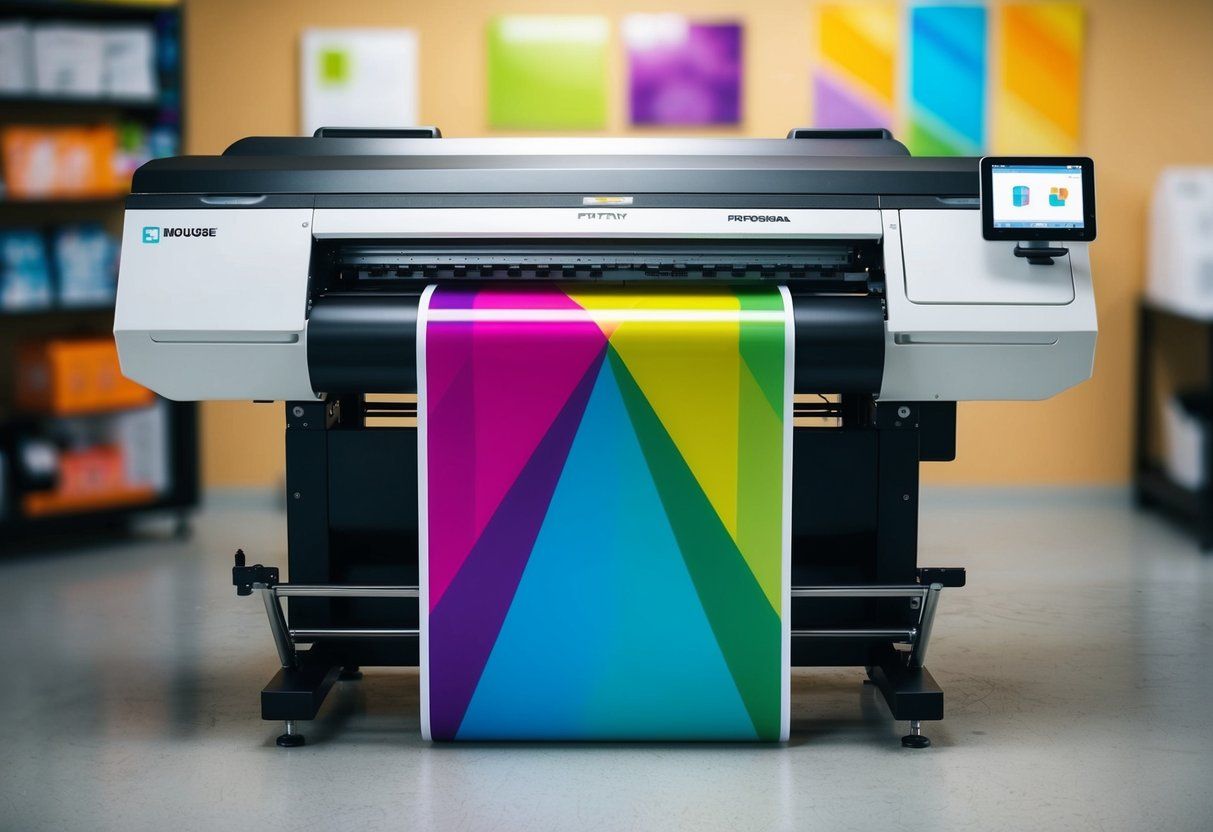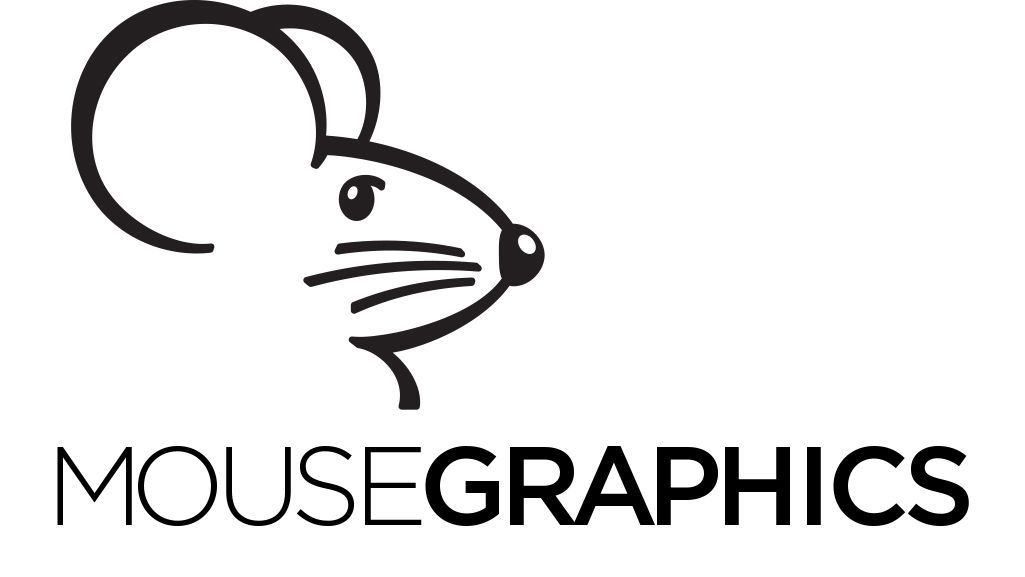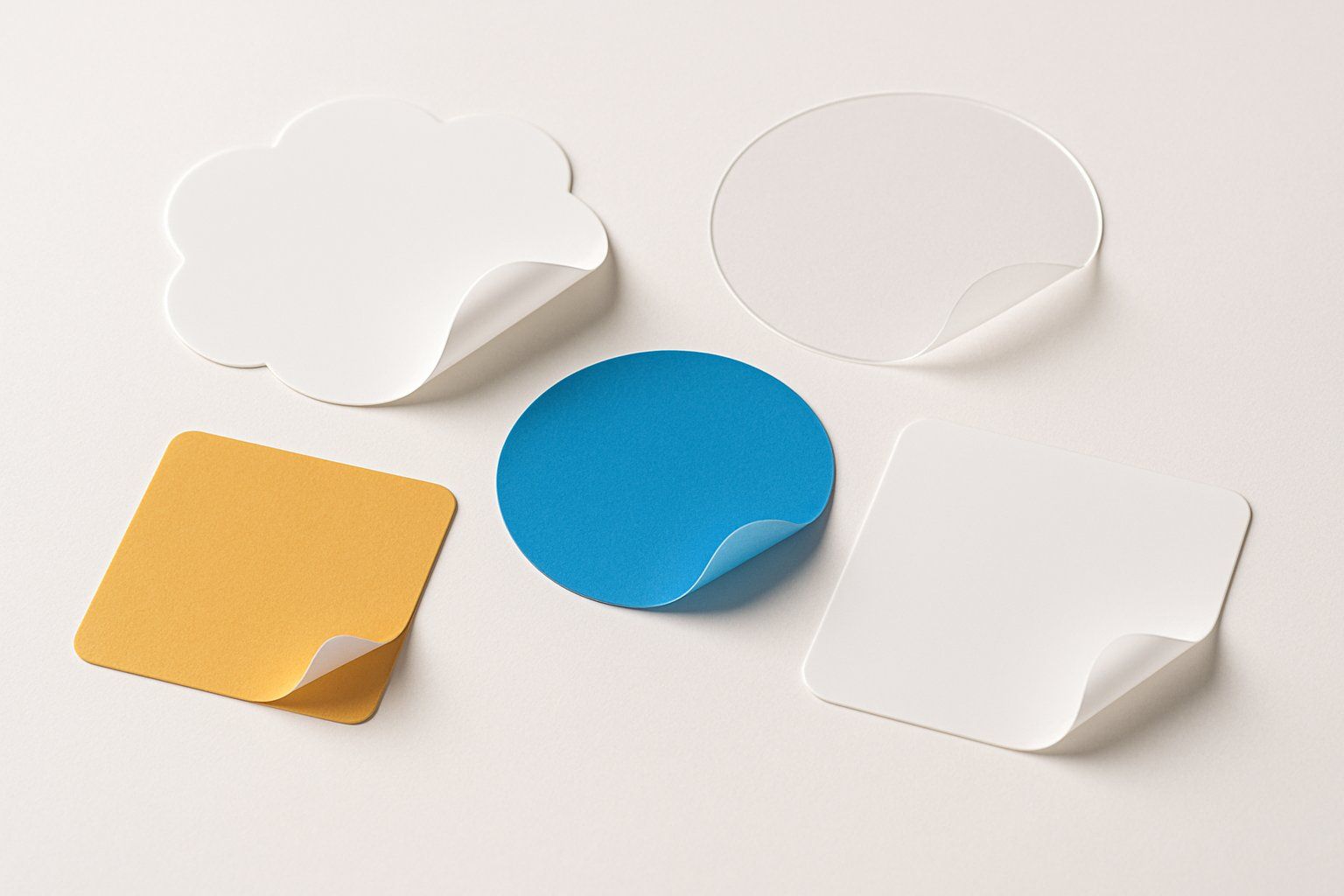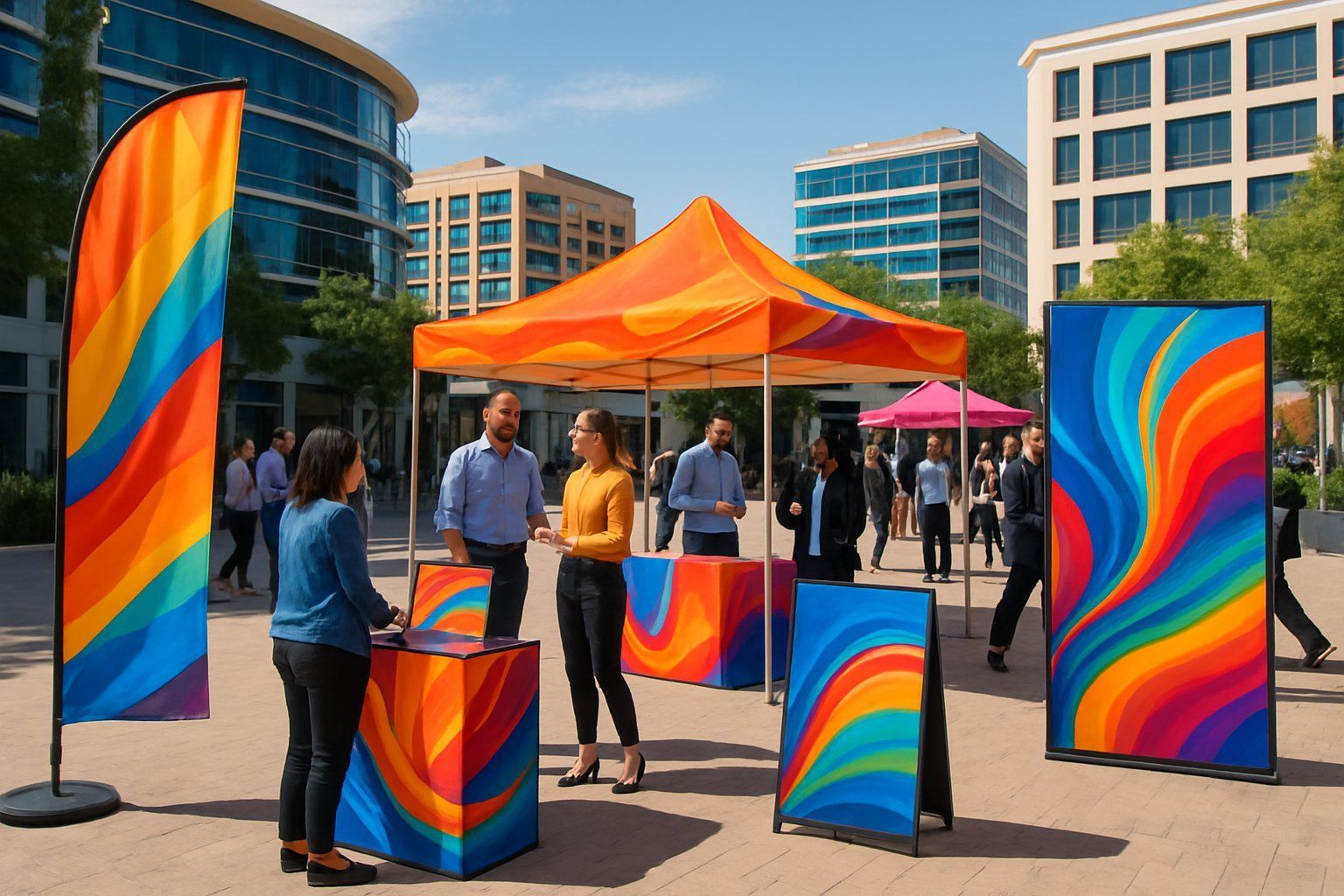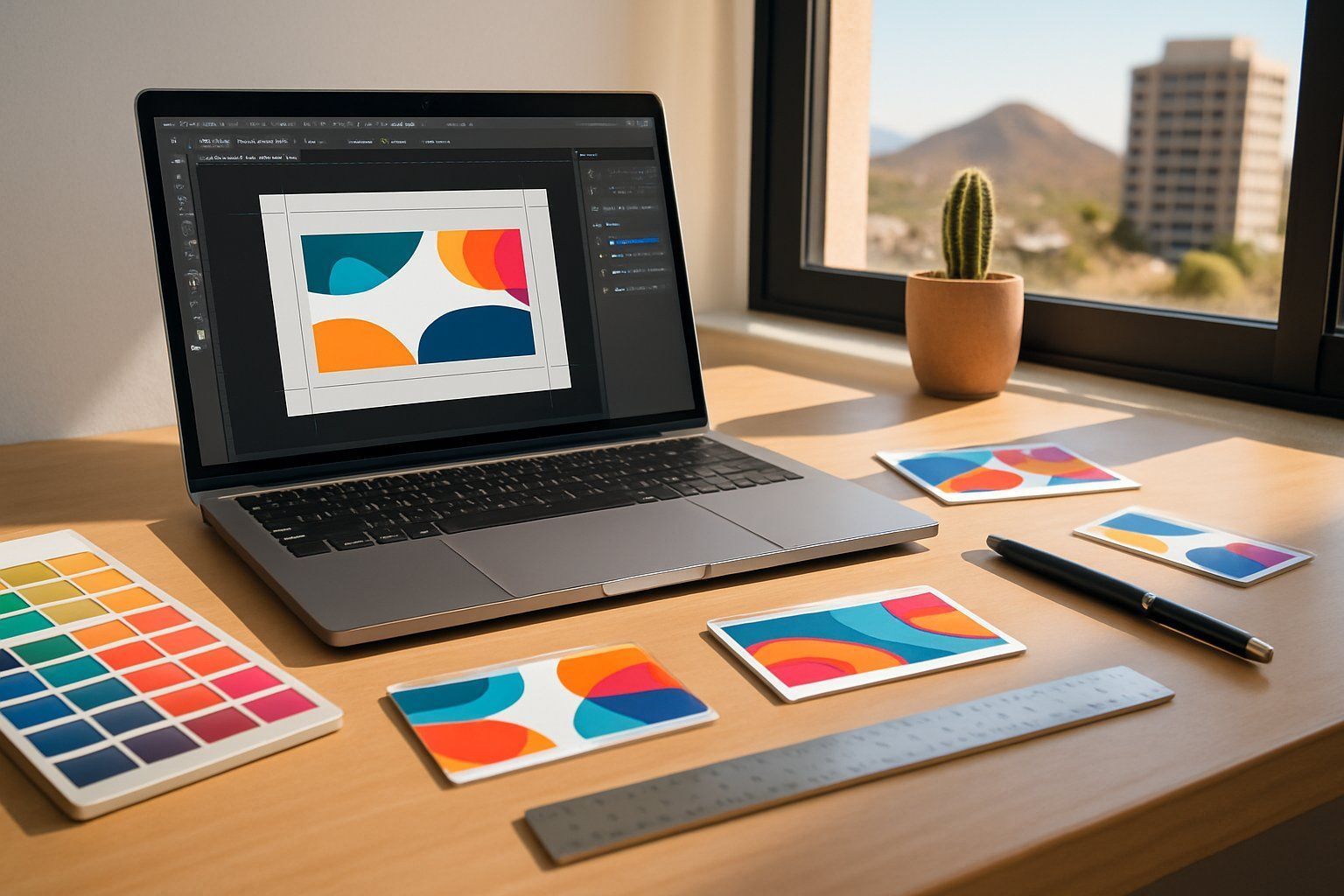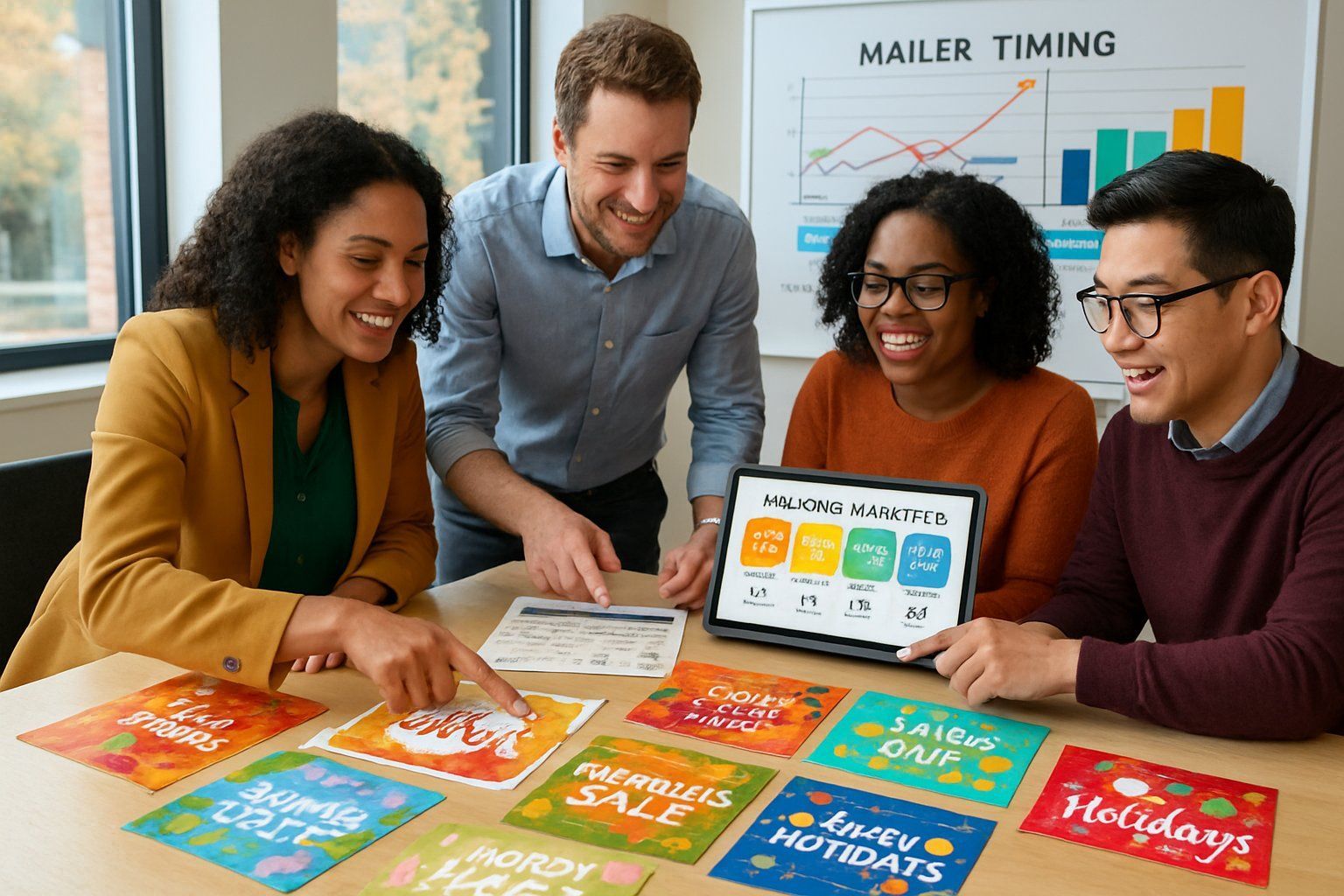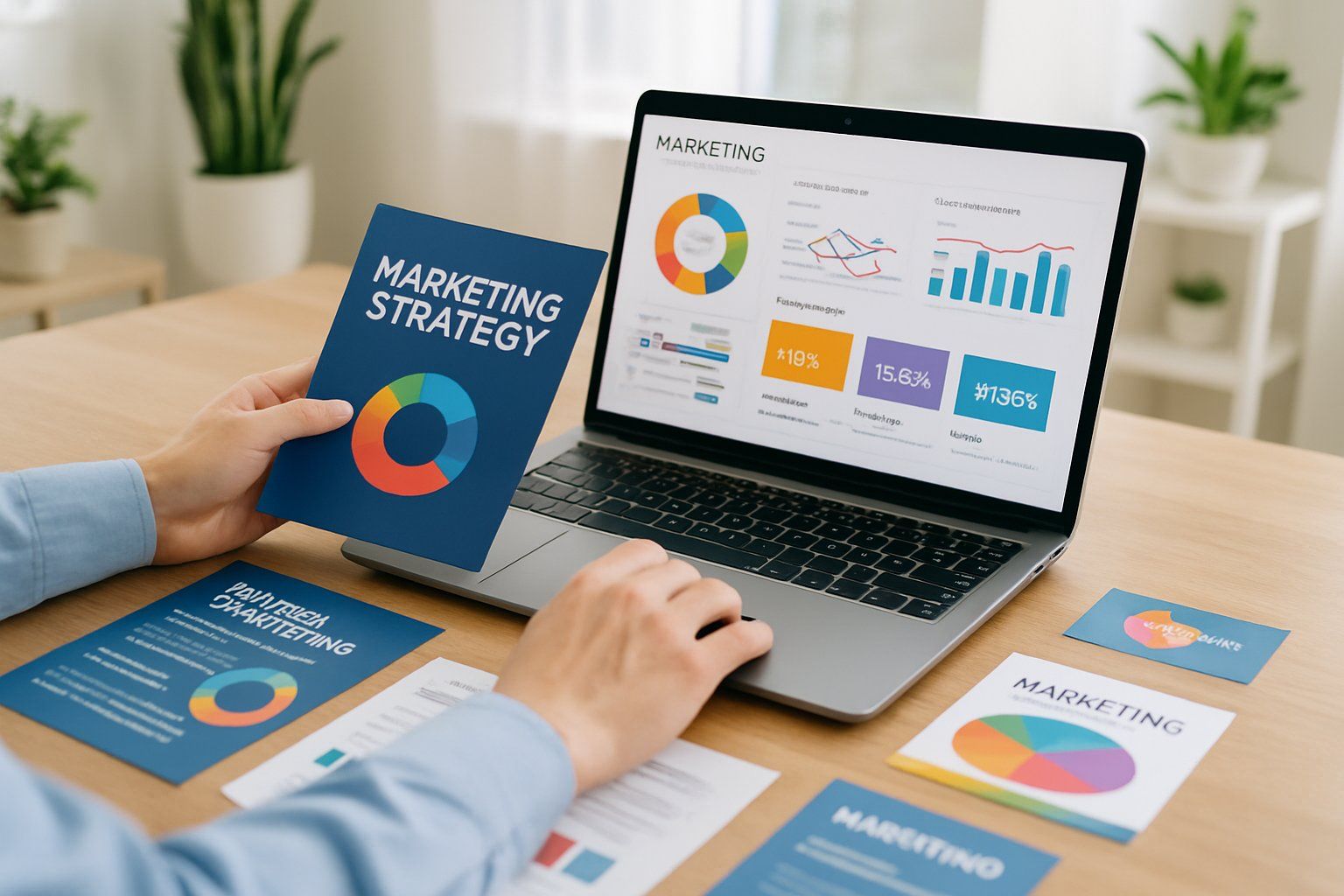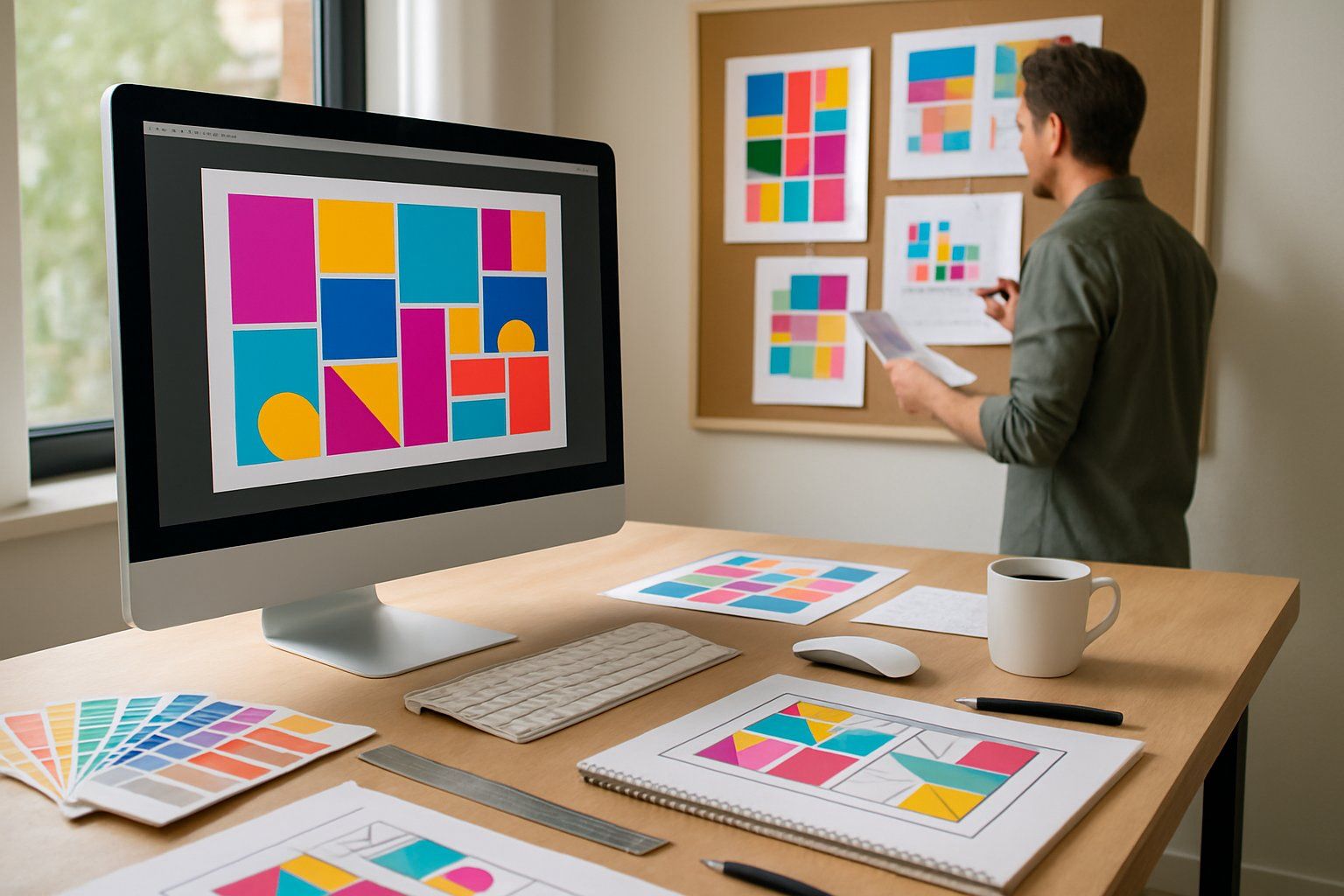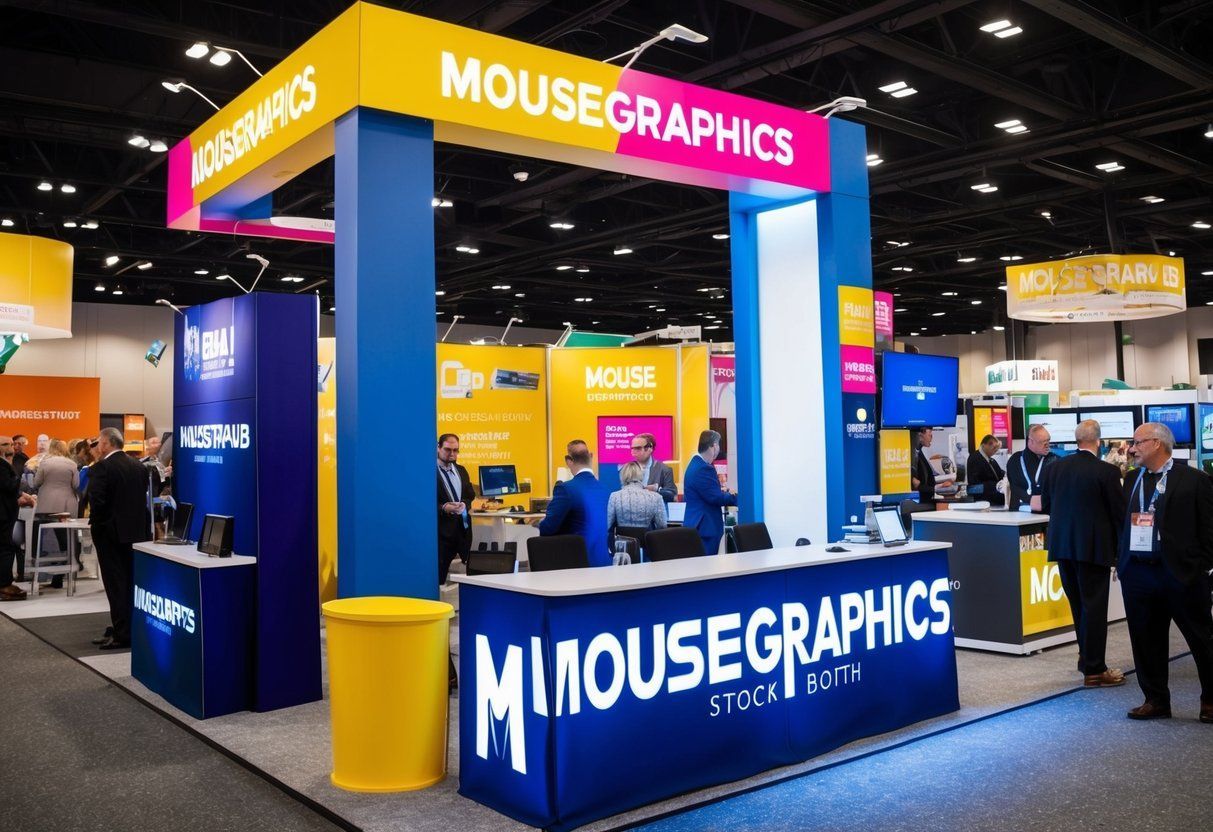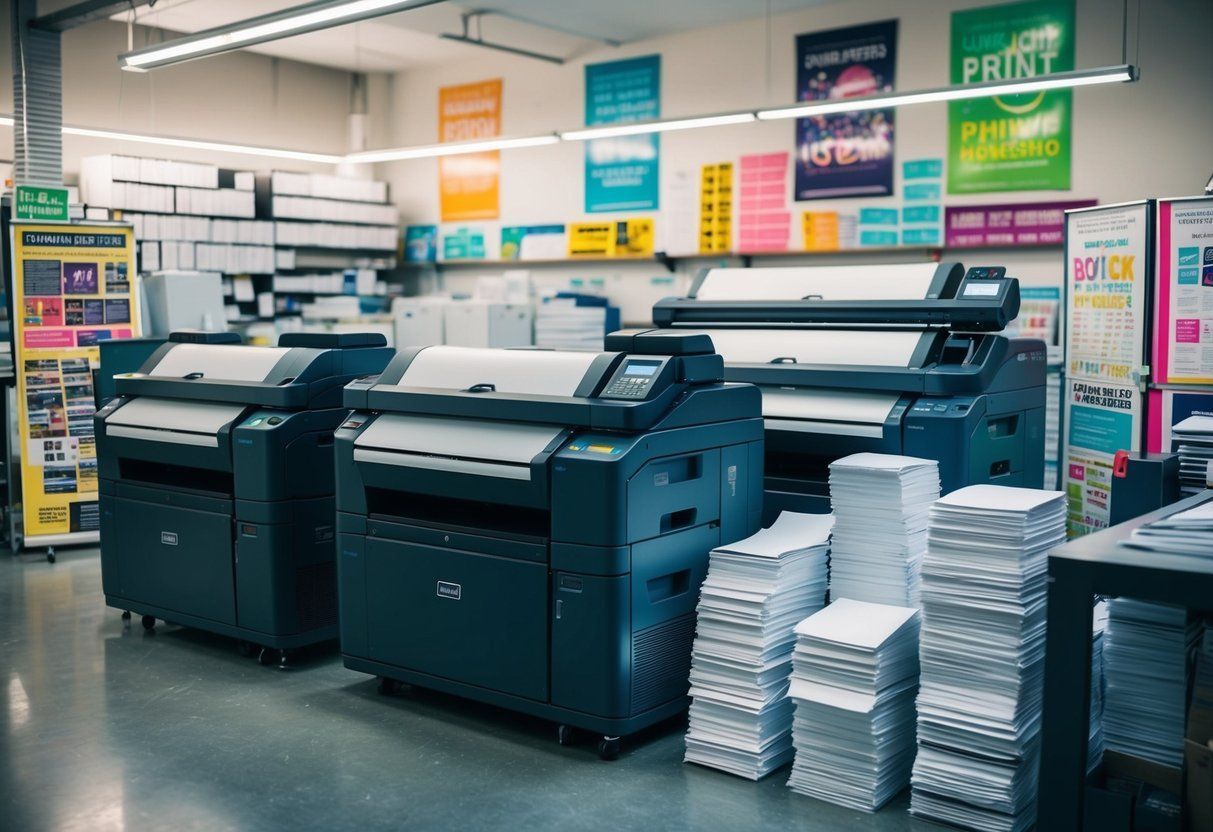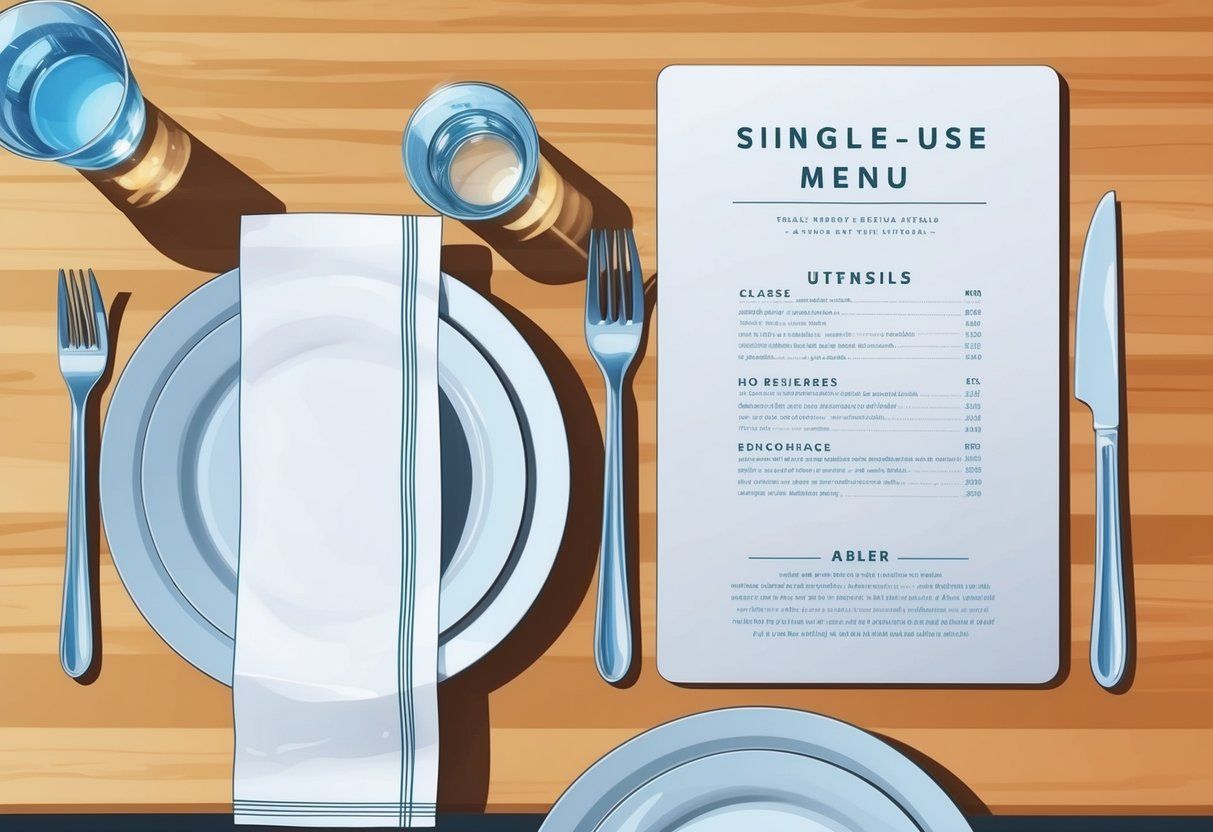Design Trends for Marketing Materials in 2024: Key Insights and Innovations
In 2024, marketing materials are set to embrace fresh and innovative design trends that reflect current consumer demands.
A blend of modern aesthetics and user-friendly elements will enhance engagement and drive brand loyalty.
Marketers will need to pay attention to how these trends evolve to stay relevant and capture the audience’s interest effectively.
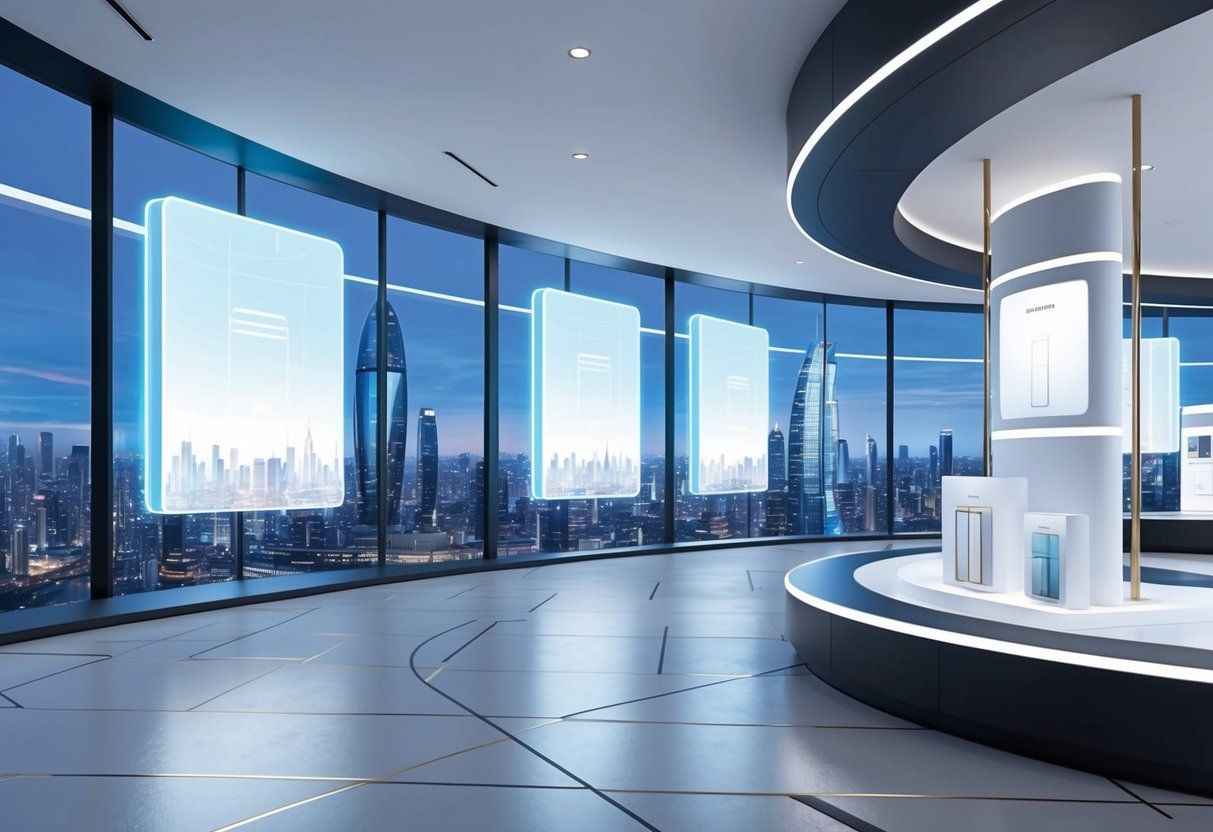
Emerging design methods will lead to creative typography, vibrant colors, and new textures that speak to various demographics.
The use of illustration and nostalgic elements will also play a significant role, making designs feel relatable and inviting.
As digital experiences become more immersive, adaptable designs will serve to educate and entice potential customers.
Evolution of Graphic Design Trends
Graphic design is changing rapidly, influenced by technology, culture, and environmental concerns.
Key trends shaping this evolution include the rise of generative AI, a shift from minimalism to maximalism, and a focus on sustainable design practices.
Rise of Generative AI in Graphic Design
Generative AI is transforming graphic design. This technology allows designers to create visuals through algorithms and machine learning.
It offers a wide array of design options, speeding up the creative process.
Many designers use tools like DALL-E and Midjourney for unique images. These tools help produce artistic elements quickly, saving time for other tasks.
Generative AI can also personalize designs, adapting them to individual preferences.
The impact of this technology is significant. It enables creatives to experiment with styles, including surrealism, that might be hard to achieve manually.
As a result, designers can push boundaries and introduce innovative visuals into marketing materials.
From Minimalism to Maximalism
Design trends have shifted from minimalism to maximalism. While minimalism focuses on simplicity and clean designs, maximalism embraces bold colors, mixed patterns, and complex visuals. This change can be seen in various branding strategies.
Maximalist designs grab attention. They use layers of graphics, textures, and typography.
This trend encourages creativity by combining different styles, which can help brands stand out in a crowded market.
Designers are increasingly exploring vibrant palettes and expressive layouts. This helps convey the essence of the brand more vividly.
Maximalism allows for richer storytelling through imagery, engaging audiences on multiple levels.
Sustainable Design and Branding
Sustainable design is becoming essential in graphic design. As consumers grow more aware of environmental issues, brands are moving towards eco-friendly practices.
Designers are incorporating sustainable materials and processes into their work.
This trend affects branding, as companies strive to convey their commitment to the planet. Visuals now often include natural elements or earthy colors. Packaging and promotional materials are also designed to minimize waste.
Sustainable branding not only appeals to eco-conscious consumers but also builds trust. It shows that a brand values responsibility and transparency.
As this trend continues, graphic designers will play a crucial role in shaping a greener future through their work.
Typography Innovations
In 2024, typography plays a crucial role in marketing materials. Bold typography and experimental designs are leading trends that grab attention and convey messages effectively. These innovations help brands stand out in a crowded market.
Bold Typography and Narrative
Bold typography is becoming increasingly popular. It captures attention quickly, making messages more impactful.
Brands use large, strong fonts to create a visual hierarchy that guides viewers through their content.
Using bold type can help tell a story. For instance, a headline in a prominent font can draw readers in. This encourages them to engage with the narrative, whether it’s an advertisement or a website.
Effective use of space around the text can also enhance readability.
Contrast is essential in this technique. Pairing bold fonts with softer elements can create a balanced design.
As a result, brands can communicate their messages clearly while maintaining aesthetic appeal.
Experimental Typography
Experimental typography is about pushing boundaries. Designers are blending different styles and techniques to create unique looks. This approach helps brands express their individuality.
Examples of experimental typography include mixed fonts, creative layouts, and playful spacing. For instance, combining serif and sans-serif fonts can add depth to a design.
Additionally, unconventional placements of text can make a layout more dynamic.
Color also plays a key role in this trend. Using unexpected color choices can bring energy to typographic designs. This makes them more memorable.
Overall, experimental typography offers brands a way to differentiate themselves and connect with their audience on a visual level.
Color and Texture
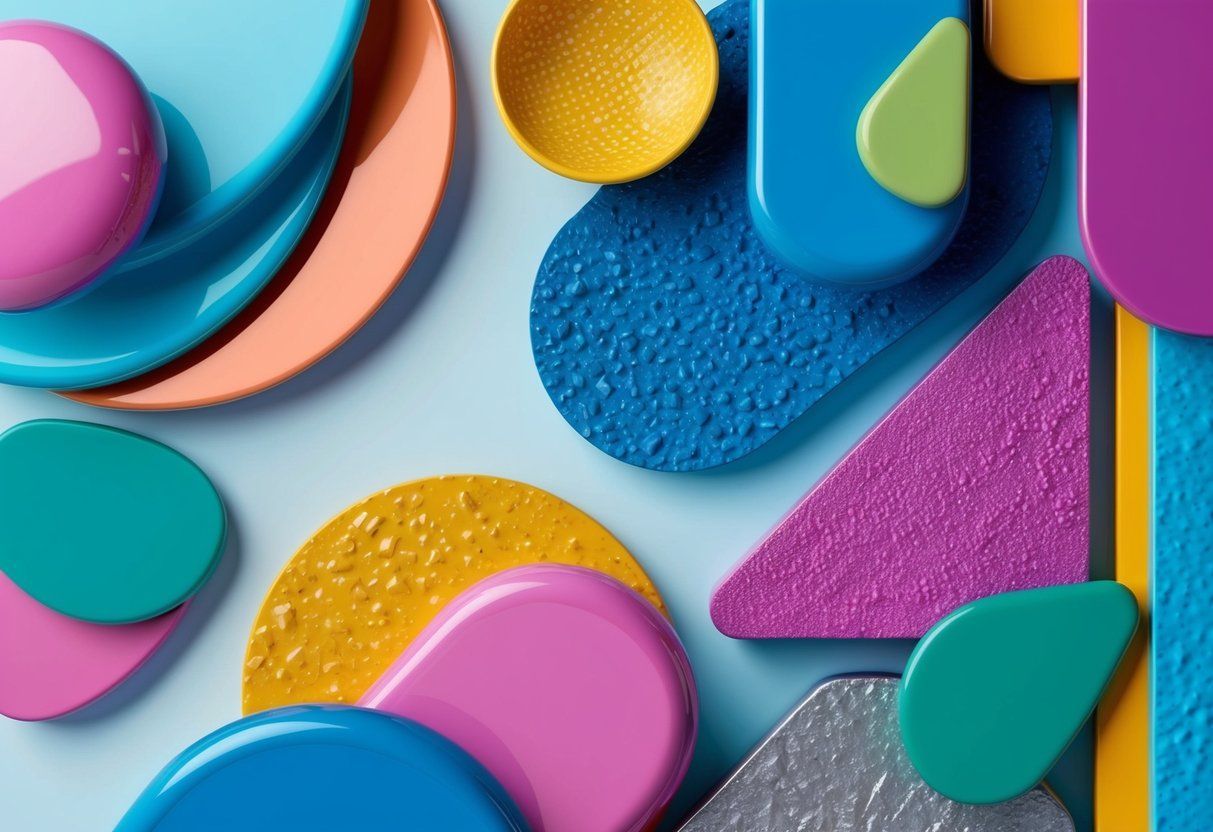
Color and texture play crucial roles in marketing materials. They create emotional connections and attract attention. Using vibrant colors and interesting textures can make designs stand out and resonate with the audience.
Vibrant Colors and Emotional Connection
Vibrant colors are powerful tools in design. They can evoke emotions and drive responses from the audience. For instance, red often stands for excitement, while blue can symbolize trust and calmness.
Using a bright color palette grabs attention quickly. It helps brands express their identity and message effectively.
Designers should consider the audience’s preferences and cultural meanings of colors.
Key Vibrant Colors and Their Emotions:
- Red: Passion, energy
- Blue: Trust, calmness
- Yellow: Happiness, optimism
- Green: Growth, health
Choosing the right colors can lead to a deeper emotional bond with customers. It encourages engagement and loyalty, making it an essential part of marketing design.
Textures and Patterns in Design
Textures and patterns add depth to marketing materials. They enhance visual interest and create unique experiences for customers.
A smooth texture might convey sophistication, while a rough texture may suggest authenticity.
Patterns can be used to create rhythm and guide the viewer’s eye. Geometric patterns often offer a modern feel, while organic shapes provide a more natural, relaxed vibe.
Popular Textures and Their Effects:
- Smooth: Elegance, luxury
- Rough: Authenticity, ruggedness
- Glossy: Modernity, freshness
- Matte: Subtlety, warmth
Incorporating these elements into designs can help brands tell their stories more effectively. Textures and patterns can evoke feelings and invite customers to interact with the materials.
Illustrative Techniques
In 2024, using illustrations in marketing materials can create a unique brand identity. Hand-drawn elements and icons add a personal touch that resonates with audiences. This section discusses hand-drawn illustrations and sketches as key techniques for effective marketing design.
Hand-Drawn Illustrations and Elements
Hand-drawn illustrations are gaining popularity because they connect with viewers on a personal level. They stand out by offering a sense of warmth and authenticity that digital art often lacks.
Brands are using these illustrations to tell their stories and engage customers more deeply.
These illustrations can be used in various ways, such as on websites, brochures, and social media. For example:
- Header images can feature a hand-drawn logo.
- Infographics can include illustrated icons that simplify data.
This technique allows brands to express individuality while creating a friendly vibe. It can make complex ideas easier to understand through visual storytelling.
Incorporating Icons and Sketches
Icons and sketches are effective tools for visual communication. They can simplify information, making it more digestible for audiences. These elements work well in both print and digital media.
Using icons can help highlight key points, making them memorable. They can be used in:
- Websites to improve navigation.
- Marketing materials to draw attention to services.
Sketches can also add a creative flair. They can serve as backgrounds or accents that enhance overall design without overwhelming it.
Combining these elements can create a cohesive look that reflects the brand’s personality. This approach helps in building a strong connection with potential customers.
Digital and Immersive Experiences
Digital and immersive experiences are shaping marketing materials in exciting ways. These approaches enhance engagement by creating memorable interactions. Companies are leveraging advanced technologies to tell stories and design unique experiences.
Midjourney into Digital Storytelling
Midjourney is changing how brands communicate through storytelling. This tool uses artificial intelligence to generate visually appealing images that support narratives.
Marketers can create tailored visuals that resonate with their audience.
By focusing on distinctive themes, brands capture attention. For instance, an outdoor brand might use vibrant images of nature to connect with eco-conscious consumers.
This visual storytelling can boost emotional engagement, making marketing messages more relatable.
Midjourney also helps teams brainstorm ideas quickly. They can generate different styles and concepts in minutes.
This flexibility allows for experimentation and innovation, ensuring that marketing materials stay fresh and relevant.
Immersive Design Techniques
Immersive design techniques draw audiences into experiences. Brands are now using virtual and augmented reality to create interactive content. These methods allow users to engage directly with products before making a purchase.
For example, a furniture store might offer AR experiences. Customers can place virtual furniture in their homes to see how it fits.
This not only enhances decision-making but also creates excitement around the brand.
Incorporating sound, visuals, and touch in campaigns can deepen involvement. Multisensory experiences help leave a lasting impression.
Utilizing immersive techniques adds a new layer to traditional storytelling, making marketing materials more impactful and unforgettable.
Retro and Nostalgia
Retro design is making a strong comeback in marketing materials for 2024. This trend taps into feelings of nostalgia, connecting brands to their audience through familiar styles and themes.
Retro Design and Its Revival
Retro design features styles from the past that evoke warm memories. This includes bold colors, vintage typography, and classic illustrations.
Marketers use these elements to create a sense of comfort and familiarity.
Key Features of Retro Design:
- Bold Colors: Eye-catching palettes that draw attention.
- Vintage Typography: Fonts that remind people of earlier decades.
- Classic Patterns: Repetition of designs that were popular in the past.
This revival appeals to consumers who appreciate the aesthetics of previous eras. It strengthens brand identity by linking products to memorable cultural moments.
Accessibility in Design
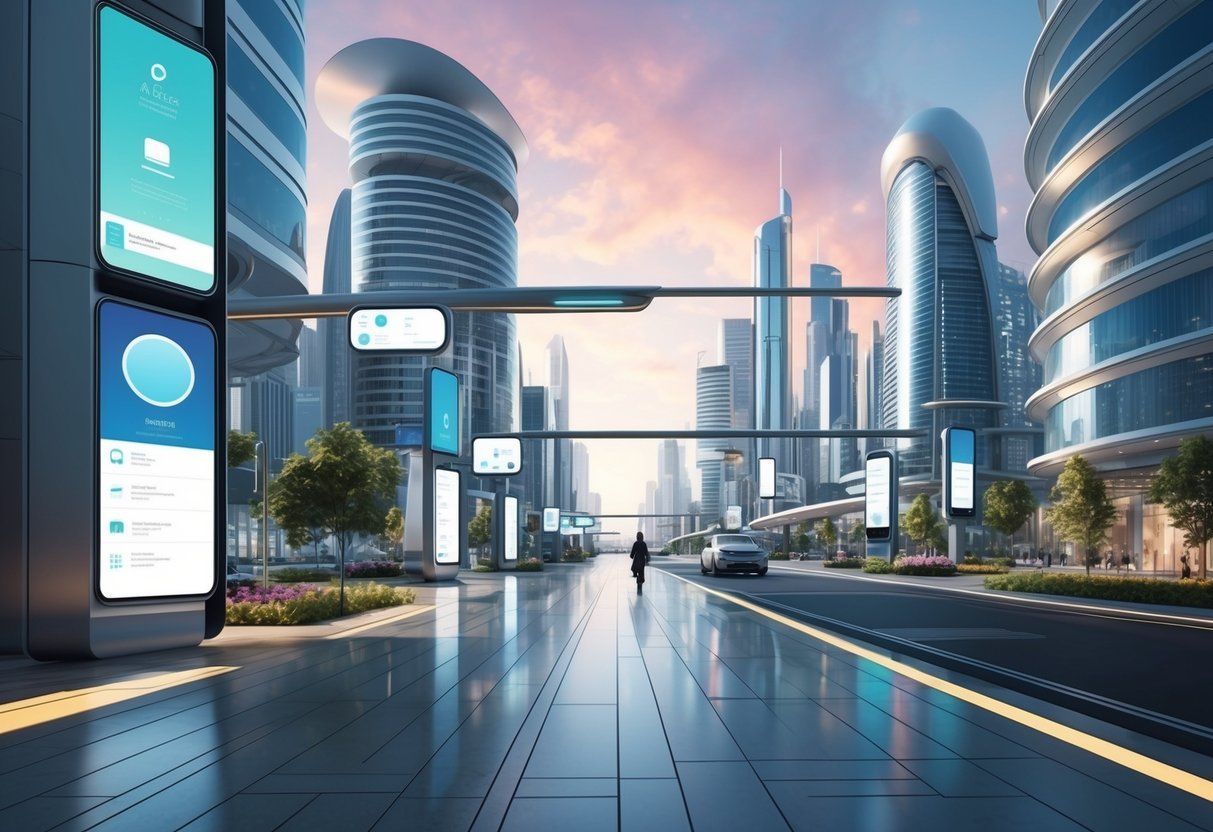
Accessibility in design ensures that marketing materials can be used by everyone, including people with disabilities. This trend is becoming more important as awareness of inclusivity grows.
Key aspects of accessible design include:
- Color Contrast : Use high contrast between text and background for easy reading.
- Alt Text : Provide descriptions for images, so screen readers can describe them.
- Simple Language : Use clear and straightforward language to reach a broader audience.
Businesses can use tools like online contrast checkers and accessibility guides to improve their designs. Here are some guidelines:
| Aspect | Recommendation |
|---|---|
| Font Size | Use a minimum of 12 pt for body text |
| Layout | Ensure a logical flow and spacing |
| Navigation | Include clear labels and headings |
Testing designs with real users helps identify issues. Collecting feedback from people with disabilities can lead to better, more effective marketing materials.
Using accessible design not only helps individuals but also enhances brand image. Companies show they care about all customers by making their content available to everyone. This approach can lead to increased loyalty and trust.
Optimizing the Design Workflow
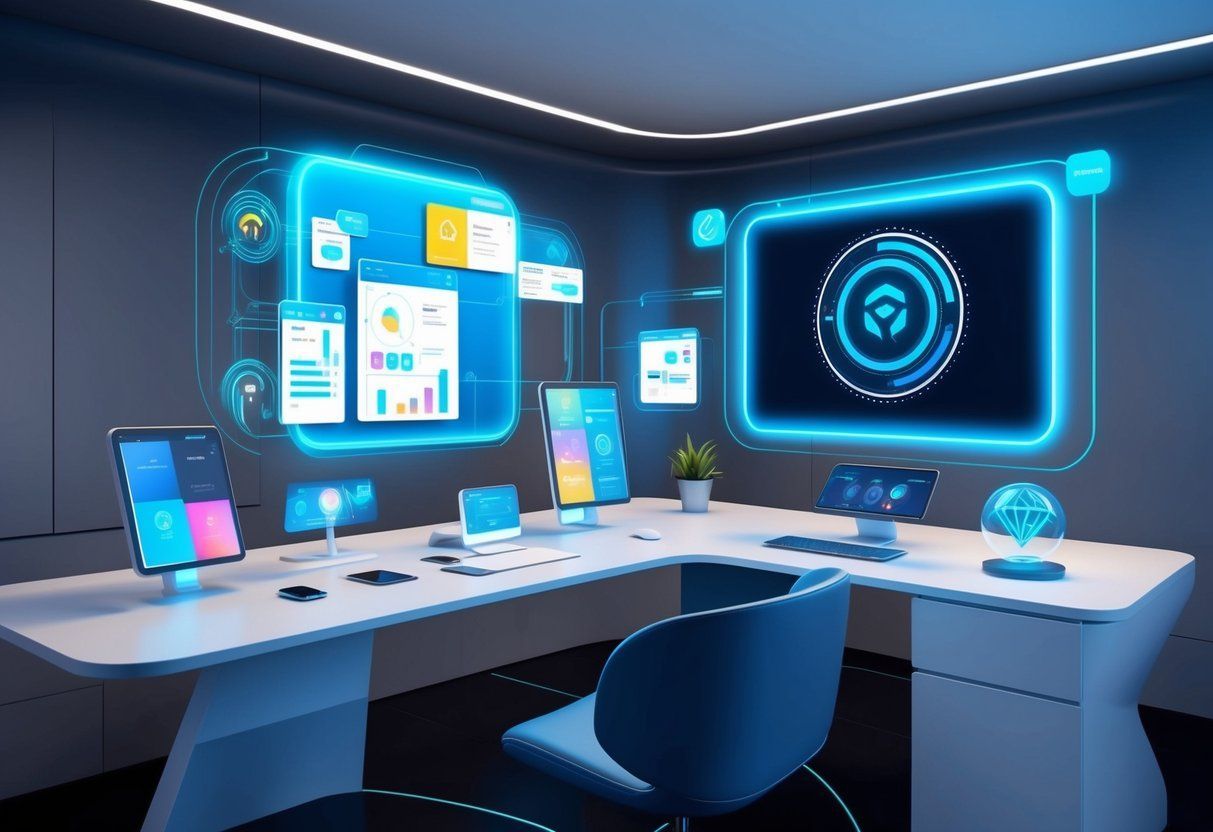
To create effective marketing materials in 2024, a smooth design workflow is essential.
A streamlined process saves time and enhances creativity.
Steps to Optimize the Design Workflow:
- Define Goals : Clearly outline the objectives for each project. This helps keep the focus and ensures everyone is on the same page.
- Select Tools : Choose design tools that fit the team’s needs.
Popular options include Adobe Creative Suite, Canva, and Figma. These tools offer various features to enhance efficiency.
- Create Templates : Use reusable templates for common marketing materials. This reduces repetitive work and speeds up the design process.
- User Feedback : Incorporate regular feedback sessions.
Gathering input from team members or clients can refine ideas and improve final designs.
- Version Control : Implement a version control system. This ensures everyone works with the latest design files and helps avoid confusion.
- Collaborative Platforms : Use platforms like Trello or Asana.
These tools help manage tasks and deadlines while promoting teamwork.
Benefits of an Optimized Workflow:
- Increased Efficiency : Streamlined processes save time.
- Better Collaboration : Clear communication enhances teamwork.
- Higher Quality Output : Focused design leads to stronger marketing materials.
Frequently Asked Questions
This section addresses key trends and developments in marketing materials for 2024. It covers visual elements, typography, color palettes, layout, technology’s influence, and sustainable practices.
What emerging visual elements are dominating marketing materials this year?
In 2024, bold graphics and minimalist designs are making a strong impact.
Brands are also using 3D and immersive visuals to engage audiences. These elements help create memorable experiences.
How are typography trends evolving in marketing designs for 2024?
Typography is shifting towards more expressive fonts.
Unique typefaces that convey personality are becoming popular. Custom fonts and variable fonts allow for greater flexibility and creativity in designs.
What color palettes are brands favoring in their marketing materials currently?
Vibrant and high-contrast color palettes are trending this year.
Bright colors evoke energy and excitement, while soft pastels create a calming effect. Brands choose colors that reflect their identity and resonate with their audience.
How is the use of space and layout progressing in today’s marketing designs?
Designers are emphasizing white space to create balance and focus.
Asymmetrical layouts are gaining popularity for their dynamic look. Clean and organized designs enhance readability and draw attention to key messages.
What role is technology playing in shaping graphic design for marketing in 2024?
New technology, like augmented reality and artificial intelligence, is transforming graphic design.
These tools enable more interactive and personalized experiences. Brands leverage technology to connect better with their customers.
In what ways are sustainable practices influencing marketing product design this year?
Sustainable practices are becoming central to design strategies. Brands are opting for eco-friendly materials and processes. This shift reflects consumer demand for more responsible and ethical marketing.…
